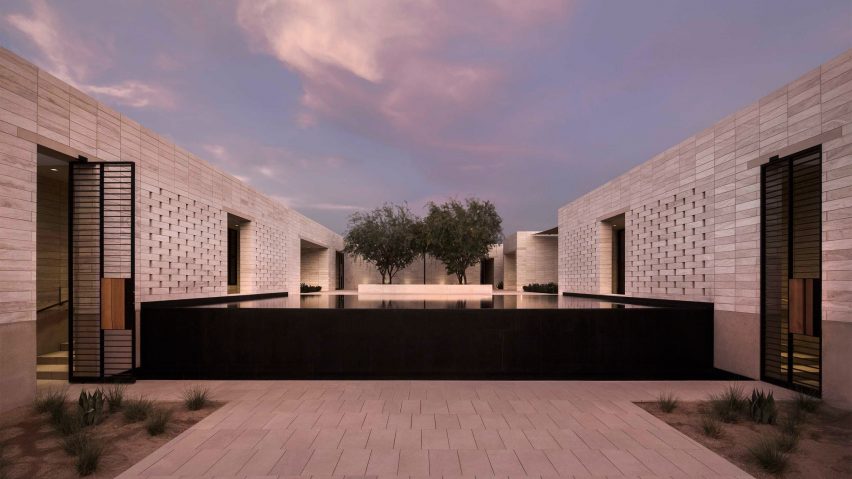
Limestone walls define sequence of courtyards at Arizona desert home by Marwan Al-Sayed
This stone villa in Arizona by Los Angeles architect Marwan Al-Sayed was conceived as a succession of interior and exterior spaces that are organised around a central courtyard.
Stone Court Villa is a four-bedroom residence located in the rugged landscape of Paradise Valley.
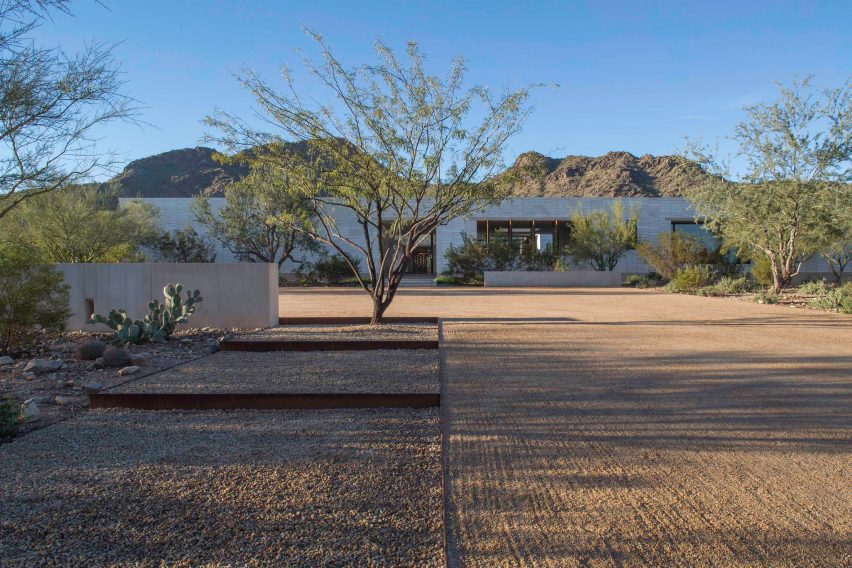
Al-Sayed described the sequence of spaces that make up the home as "a rhythm that constantly fluctuates and blurs the distinction between inside and outside".
"The materials are monolithic and reduced to a few elements so that the emphasis remains on the desert beyond, and the nuances of light and shade within and around the walls," he added.
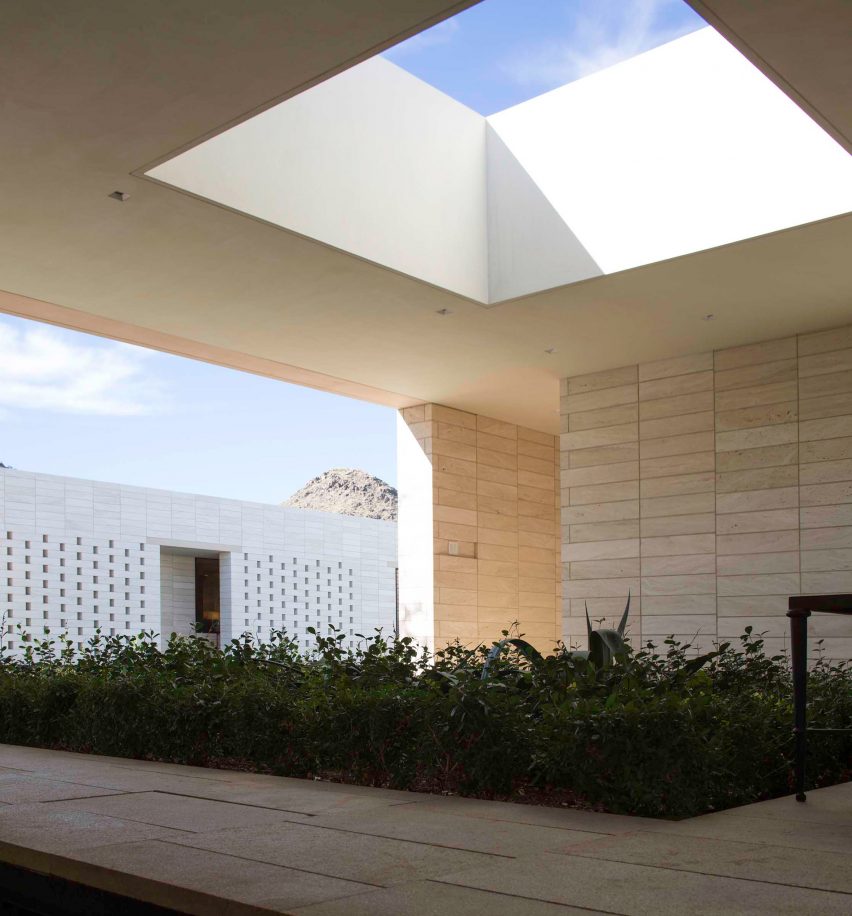
The initial approach to the villa does not reveal any of its interior organisation. Visitors are faced with hefty limestone walls that form the boxy massing of the residence.
Passing through a central entrance gate leads to the main courtyard, for which shade is provided by four mesquite trees. Sight lines to the desert beyond appear at certain instances, framed by the thick walls.
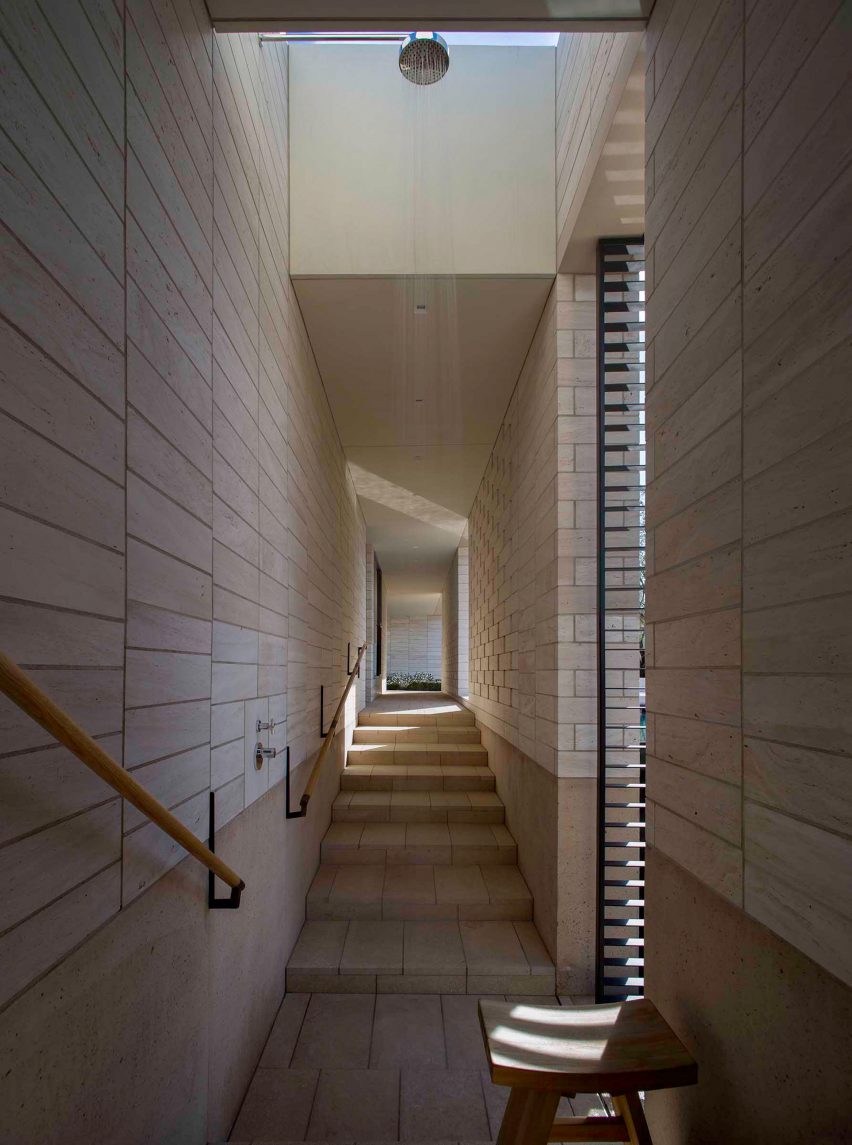
The eastern portion of the home contains two bedrooms, each of which has its own bathroom and walk-in closet. These private areas are buffered by exterior spaces that are defined by wall enclosures, but are open to the sky above.
Adjacent to the central courtyard is the kitchen and dining room, which opens onto an outdoor dining area that enjoys desert vistas.
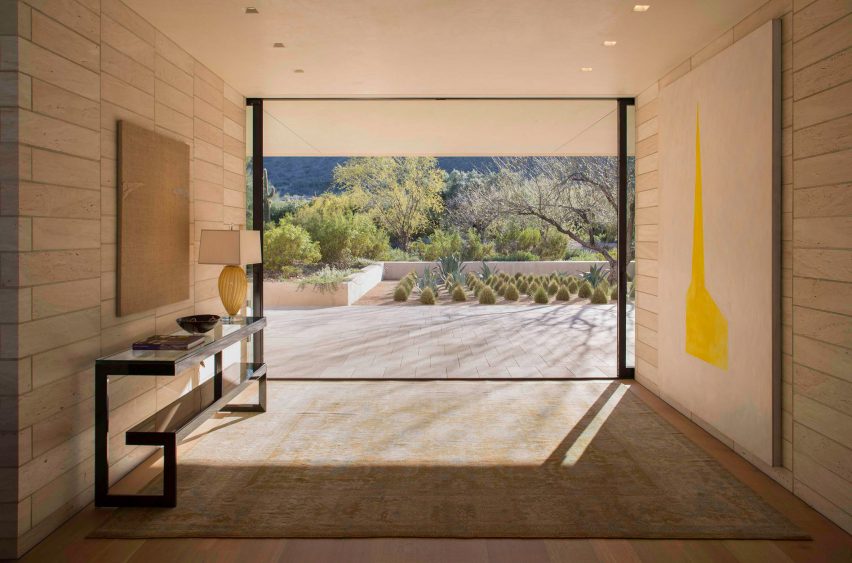
The western half of the residence includes a guest suite as well as the master bedroom. Here, amenities such as a secondary kitchenette and yoga room afford residents and their guests more privacy.
An expansive pool separates the owner's quarters from spaces for their visitors, and is contiguous to the main courtyard area.

"This body of water, with a negative edge to the desert, hides a deep swimming pool and the lower pool terrace beyond, thus the impression one has is of a large abstract plane of water reflecting only sky and desert beyond," said Al-Sayed, who founded his studio in 1997.
The architect also described the project as "a modern timeless ruin in the Sonoran desert".

Certain portions of the limestone walls have openings built into them, allowing light and air to circulate through the home and offering glimpses of the residence's various outdoor spaces.
To prevent overheating, the home's windows are set deep into the walls, which protects them from direct sunlight.
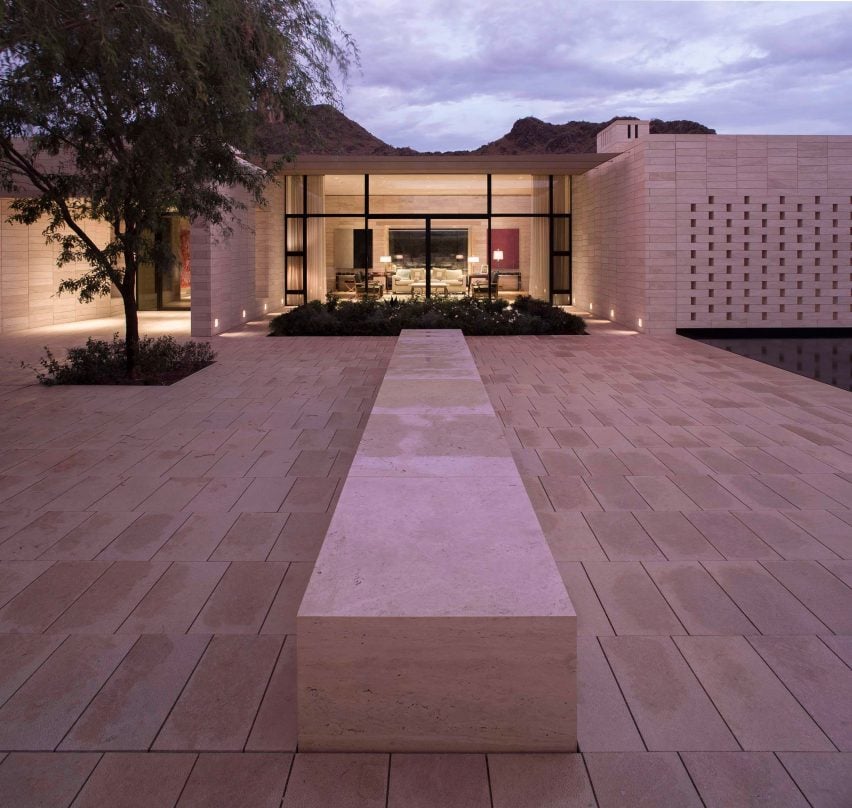
Because the residents wanted to avoid using air conditioning, the home's thick roof incorporates a system of tubes through which cold water runs.
This cools the home more quietly and effectively than a forced air system, according to Al-Sayed.
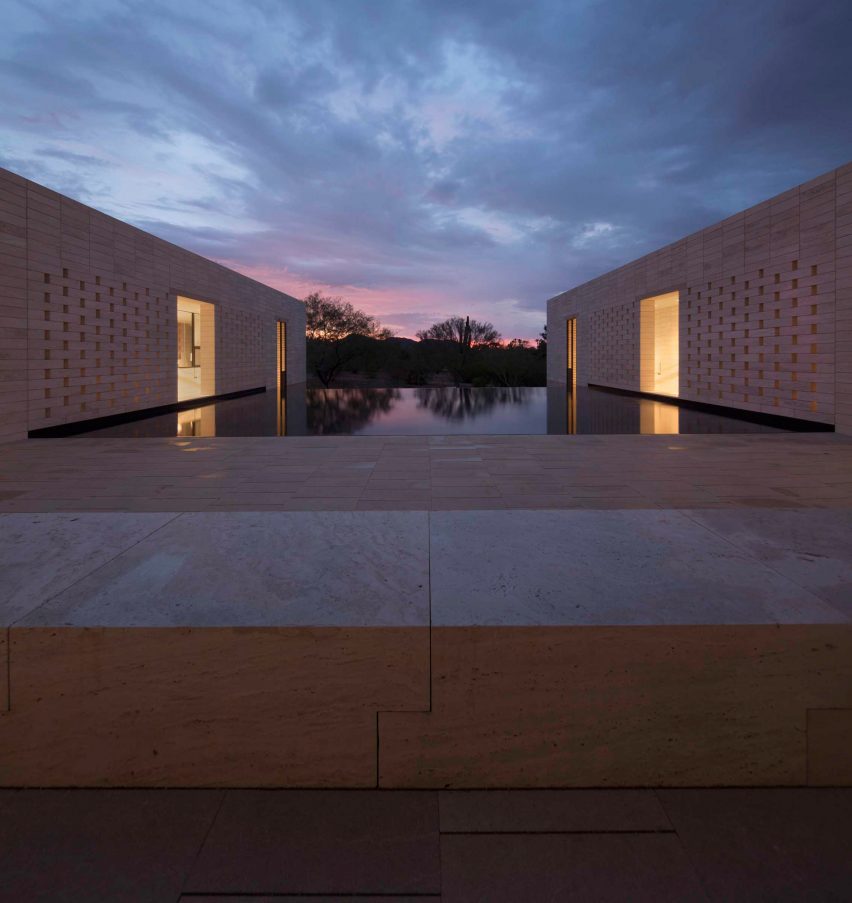
"Hundreds of tiny capillary tubes are embedded in the plaster ceiling and filled with chilled water of about 63 degrees," he explained.
"This closed-loop system creates a cold plane that draws the heat from the occupants body to the cooler surface."
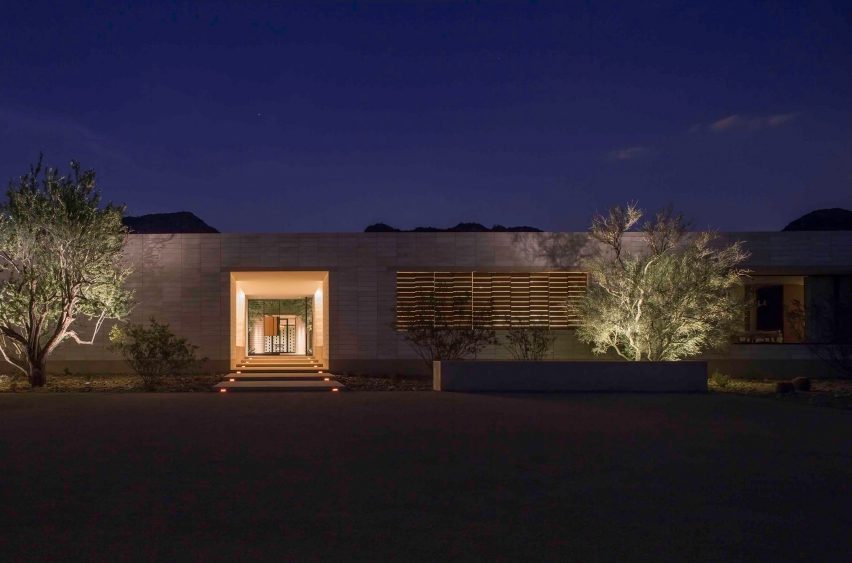
Other desert homes include a house that is clad in weathering steel panels that have the appearance of scales and a home lifted above the desert floor in order for all the spaces to be laid out on the same level.
Dezeen recently rounded up a list of ten homes that make the most of their arid surroundings.
Photography is by Matt Winquist.
Project credits:
Principal in charge of Design: Marwan Al-Sayed
Managing partner: Mies Al-Sayed
Project architect - design phase: Suzanne Stefan
Project architects - construction phase: Gabby Quijada
Design assistants: James Deering, Koki Masumi, Jürgen Scheemann, Diana Roitman
General contractor: 180 Degrees
Structural engineer: Rudow & Berry
Mechanical engineer: Roy Otterbein
Lighting design: Clark Johnson
Interior design: Jan Showers
Civil engineer: Bob Atherthon
Landscape - design phase: Michael Boucher Landscape
Landscape - construction phase: Jeff Berghoff Design
Art consultant: John Runyon